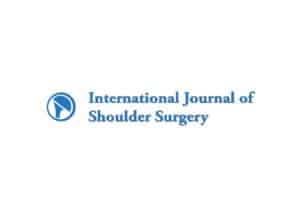
PURPOSE:
(1) Describe a previously unreported finding involving the intra-articular portion of the subscapularis, the Conrad lesion. (2) Describe a novel classification system for the spectrum of non-insertional tendinopathy of the subscapularis. (3) Report the outcomes of surgical treatment of this spectrum of pathology.
MATERIALS AND METHODS:
Outcomes of 34 patients (23 males and 11 females, mean age 60.5 ± 7.5) with non-insertional tendinopathy of the subscapularis treated arthroscopically were retrospectively reviewed. All patients had anterior shoulder pain with no weakness during belly-press testing and no subscapularis footprint involvement on magnetic resonance imaging. All patients were managed with subscapularis tendon debridement and side-to-side repair along with treatment of concomitant pathology.
RESULTS:
Seven patients had a Type I lesion (so-called Conrad lesion) – a nodule on the leading edge of the subscapularis. Eighteen patients had a Type II lesion – a visible split tear with degeneration in the upper ½ of the intra-articular tendon. Nine patients had a Type III lesion – more extensive splitting in the tendon with advanced tendon degeneration. At a mean follow-up of 24 months, 97% of patients were completely satisfied. Significant improvements were seen in forward elevation (152 ± 12° to 172 ± 5°, P < 0.001) and visual analog scale pain scores (5.9 ± 1.7-0.6 ± 1.0, P < 0.001). Internal rotation strength and external rotation motion at the side were maintained. ASES scores averaged 95.4 ± 7.4, disabilities of arm, shoulder and hand scores averaged 6.19 ± 9.8, Western Ontario Rotator Cuff scores averaged 91.7 ± 9.3 and the average University of California at Los Angeles score was 33.1 ± 2.4.
CONCLUSIONS:
We present a previously unreported finding of the subscapularis, the Conrad lesion, along with a novel classification system for non-insertional tendinopathy of the subscapularis. Arthroscopic treatment of this spectrum of tendinopathy along with concomitant shoulder pathology eliminated pain and improved patient outcomes without detrimental effects.
Full Article: Non-Insertional Tendinopathy of the Subscapularis
